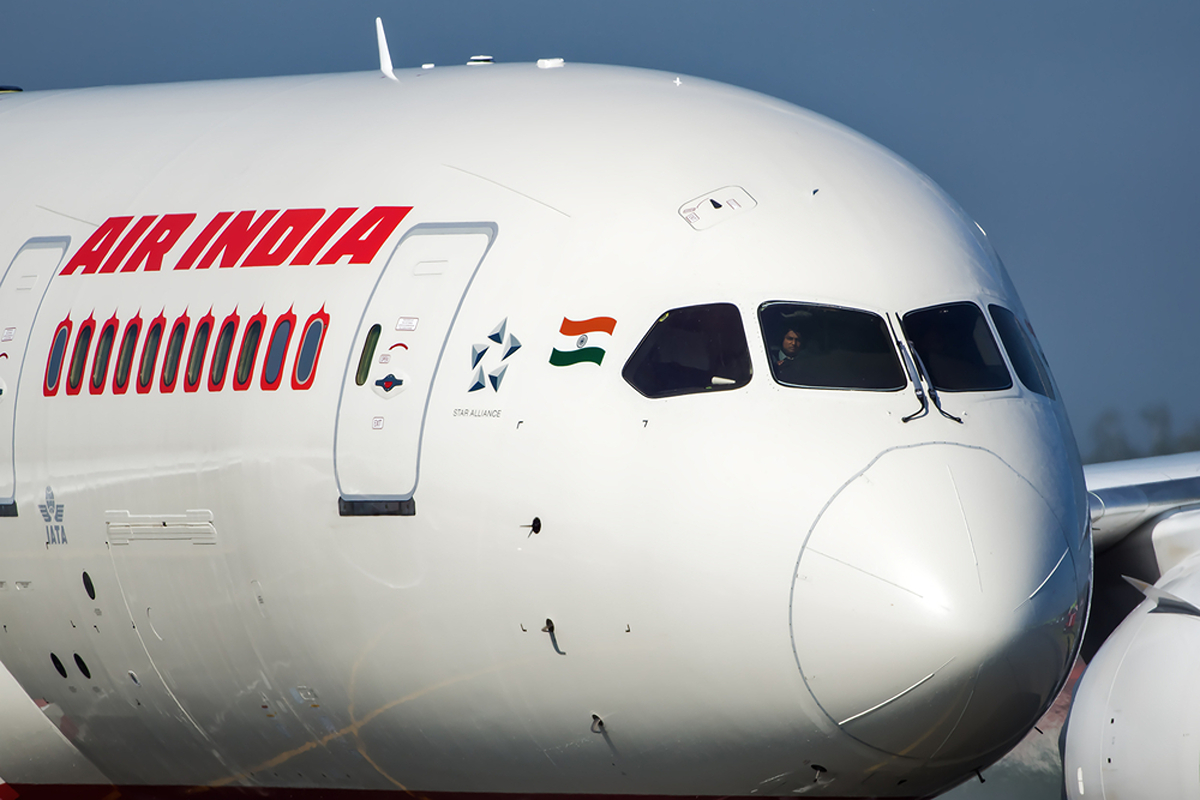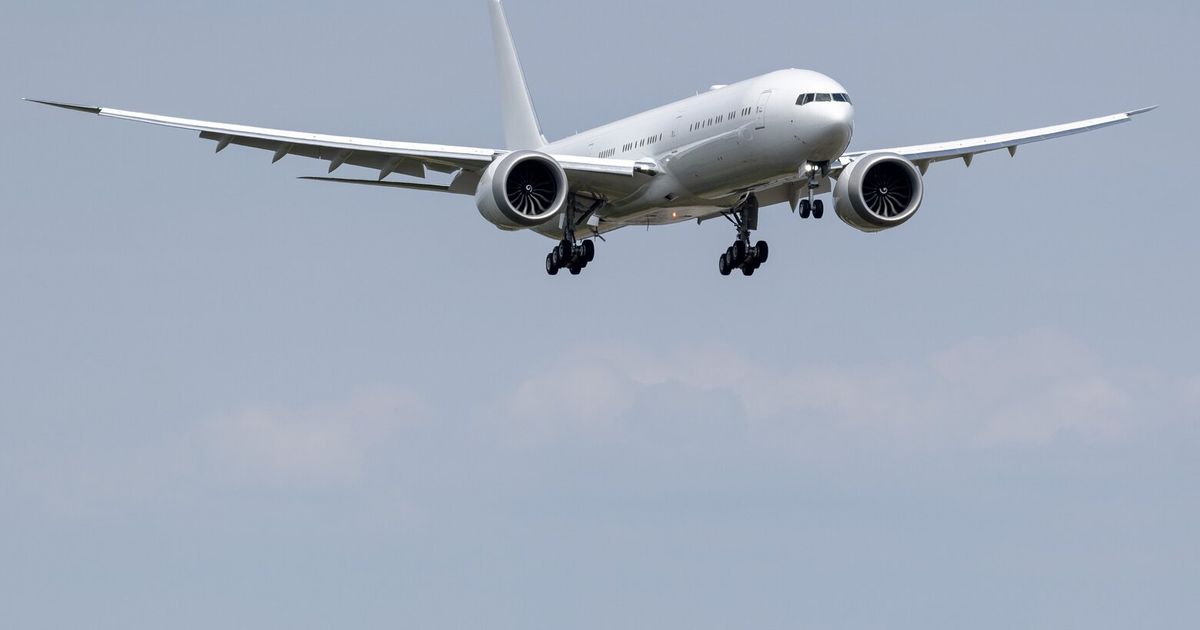A_Z
Старожил
Меня зовут Бонд. Джеймс Бонд.- Boeing 7007 ...
Follow along with the video below to see how to install our site as a web app on your home screen.
Примечание: This feature may not be available in some browsers.
Меня зовут Бонд. Джеймс Бонд.- Boeing 7007 ...
Как, а сайдстики?А какое отношение Airbus имеет к этому самолёту кроме факта покупки фирмы-производителя?
Как, и они тоже?Как, а сайдстики?
если 777Х начнут поставлять - это должно неплохо добавить, спрос там большой и двигатели не LEAPНо это в идеальной картинке. А там видно будет.
Это разные LEAP.У Airbus есть проблемы с двигателями Leap, а у боинга разве нет?
Разные сборочные заводы, возможно с этим связаноНадо хотя бы пару лет Боингу стабильно закончить. В 23 году тоже вышли на 528 самолетов, а в 24ом резко сдулись до 348.
Сейчас действительно кажется, что выбираются из ямы. Этот год могут закончить с 600 самолетами. Увеличение производства 737 может дать в следующем году еще 100 бортов. Что даст 700 шт. А там и до рекордов в 800шт уже недалеко. Но это в идеальной картинке. А там видно будет.
У Airbus есть проблемы с двигателями Leap, а у боинга разве нет? Если сравнивать поставки 320/737...
боинг 717Потому, что по честному и с этим самолётом надо бы так.

 www.aerotime.aero
www.aerotime.aero
Адвокаты заведомую чушь предъявляют. Кто этот цирк оплачивает, тот кто заказывает, скорее всего.
Families of Air India 171 victims launch class action against Boeing, Honeywell - AeroTime
The families of four victims of the Air India 171 accident have launched legal action against Boeing and Honeywell, citing negligence.www.aerotime.aero
Boeing ‘Clearly Behind’ On 777-9 Certification, Ortberg Says | Aviation Week Network
Boeing’s 777-9 certification program is falling behind, CEO Kelly Ortberg said.aviationweek.com
Boeing’s 777-9 certification program is falling behind, CEO Kelly Ortberg said, suggesting the issues could be significant enough to warrant a formal change to its current first-delivery timeline.
“We still don’t have authorization from the FAA for a good portion of the certification program,” Ortberg said at the Morgan Stanley Laguna conference Sept. 11. “So, we’re working through that right now with the FAA, but we were clearly behind our plan in getting the certification done.”
Boeing’s notional timeline has both FAA approval and first deliveries coming in 2026. Ortberg did not change this, but said senior leadership are evaluating the issue to determine potential ramifications.
“I’ve asked [CFO] Jay Malave ... to spend some time as we come through this quarter, really looking at this schedule slip and understanding what the implications are and our go-forward plan,” he said.
Ortberg emphasized that the latest delays are not linked to technical issues. “Both the airplane and the [GE Aerospace GE9X] engine are really performing quite well,” he said.
He alluded to an increasingly deliberate FAA approach to aircraft approval as the major obstacle.
“We can go fly, but we can’t actually get the certification credit until we get” type inspection authorization (TIA)—formal FAA testing clearance—for the required tests, Ortberg said.
The FAA broke the 777-9 TIA into phases, which give Boeing approval to conduct required tests in specific batches. Before approving each TIA phase and allowing its pilots on the aircraft, the FAA must be convinced that the design conforms to the applicable regulations.
Phased TIAs are not new. What has changed is the FAA’s level of scrutiny.
Some of the new process is linked to requirements, such as new limits in delegating certification work to industry, in 2020 legislation that reformed FAA certification. It also reflects the post-737 MAX crisis environment in which the agency is simply asking more, and sometimes more complex, questions before allowing applicants to progress to a certification program’s next step.
The changes came with Boeing in the midst of its 777-9 certification program as well as efforts to earn approval for the last two 737 MAX variants, the 737-7 and 737-10. All three programs have been hit with multiple delays—some technical, and some linked to new certification protocol—and are years behind as a result.
The 737s are currently on track for 2026 approvals, provided that a required redesign of the engine anti-ice system earns FAA approval.
“At the last earnings call [in July], we slipped the completion of the certification from the end of the year into next year,” Ortberg said. “The good news is we’ve made really good progress on the design of the engine anti-ice since that time. I feel pretty good that we’re nailing that design.”
“We’re in the process right now of working with the FAA on the certification of that design, what tasks need to be done,” he added. “We’re still planning on getting that cert done next year, getting aircraft delivered next year.”
Going forward, Ortberg sees room for improvement without compromising safety.
“The certification process [is] way too slow,” Ortberg said. “We’ve got to work with the FAA in swinging the pendulum back and making that a process that’ll work. I can’t imagine that we can do a new airplane without having that process refined.”
Вместо этого у компании до сих пор нет разрешения от регулирующего органа на «значительную часть программы сертификации», сообщил Ортберг аналитикам на конференции Morgan Stanley в четверг.
«Мы явно отстаем от своего плана по проведению сертификации», — добавил Ортберг.


одно другому не мешает ... программа длинная ... на какую-то часть есть подтверждение и разрешения ... ее и летают ... сейчас ...Врет, собака.
Boeing’s long-delayed 777X falling behind schedule, CEO Ortberg says
CEO Kelly Ortberg said the company still doesn’t have authorization from the FAA for a “good portion of the certification program” for the Everett-based 777X.www.seattletimes.com
Вот, в волшебных мирах Ivan Pirog, 777-й успешно проходит сертификационные испытания... летает туда-сюда
У Боинга сейчас самый крутой в мире директор по продажам
Turkish Airlines Orders up to 75 Boeing 787 Dreamliners, Commits to More 737 MAX Jets
Boeing [NYSE: BA] and Turkish Airlines announced today a firm order for up to 75 787 Dreamliners, the flag carrier's largest ever Boeing widebody purchase. The deal includes 35 of the 787-9 model,...boeing.mediaroom.com
Эх, не читают турки Васю, не читают... -))
Это когда же они их получат? Тут и хочется ещё самолётов получить, но очередь на годы и годы.Узбекистан ещё 22 В787 заказал